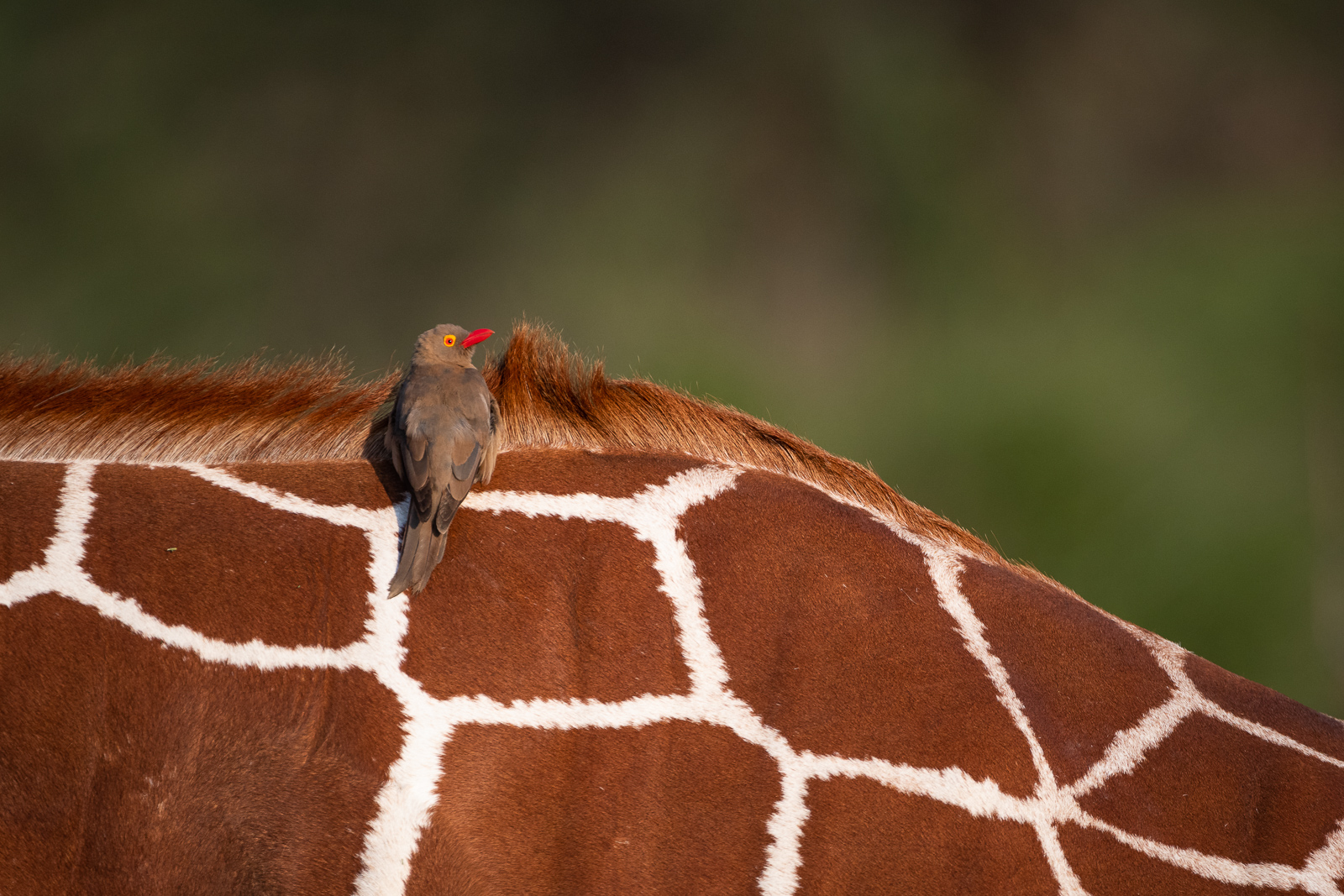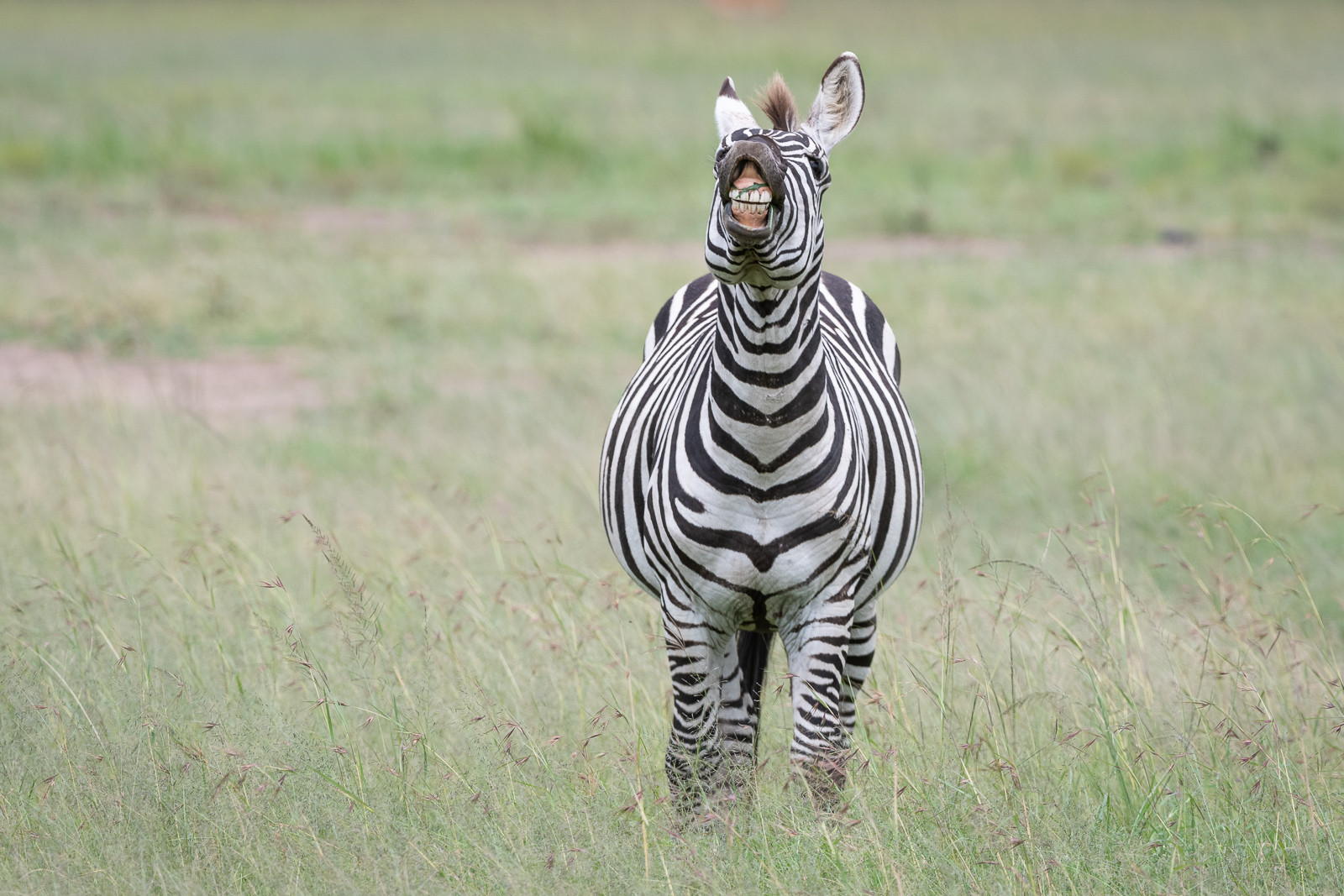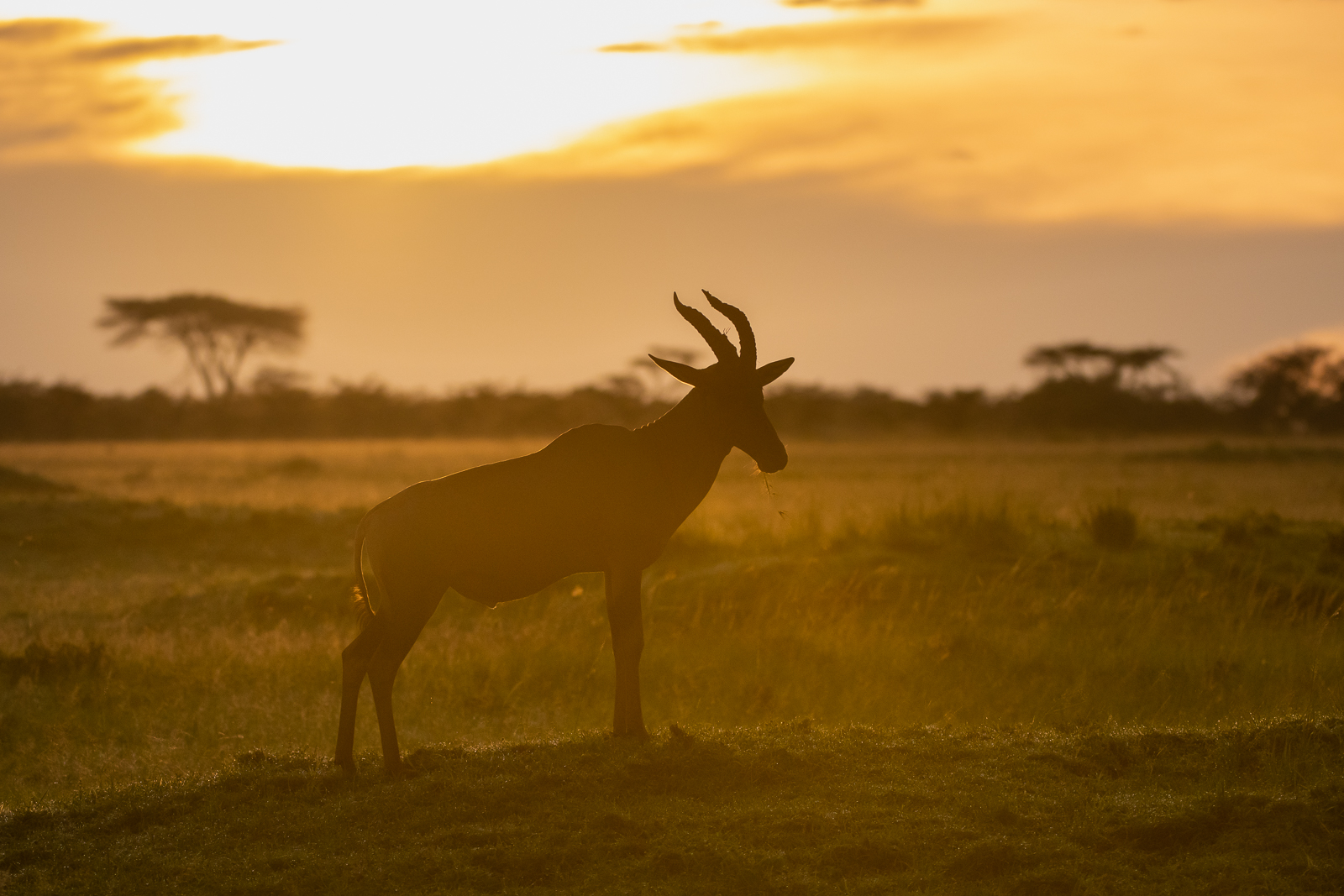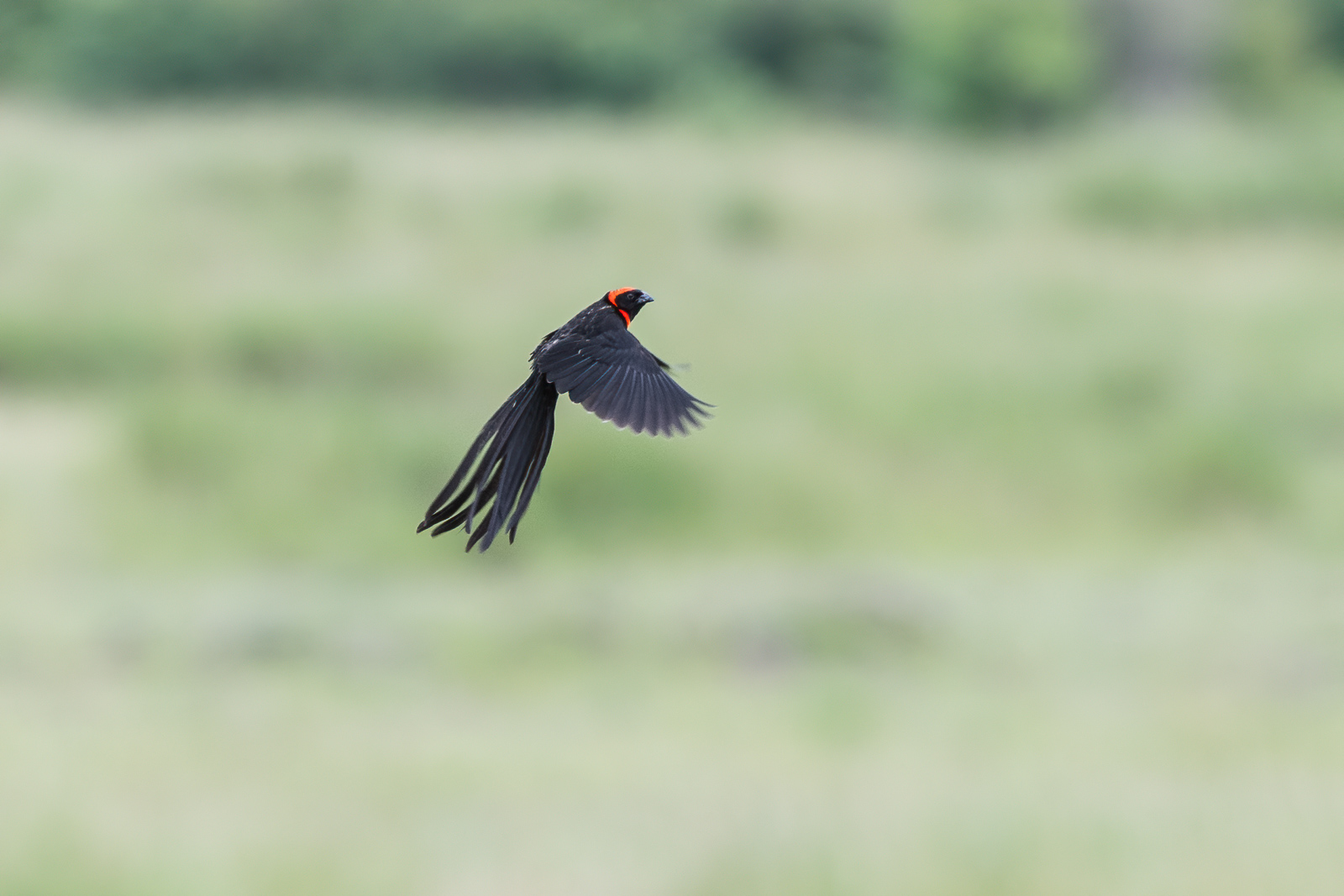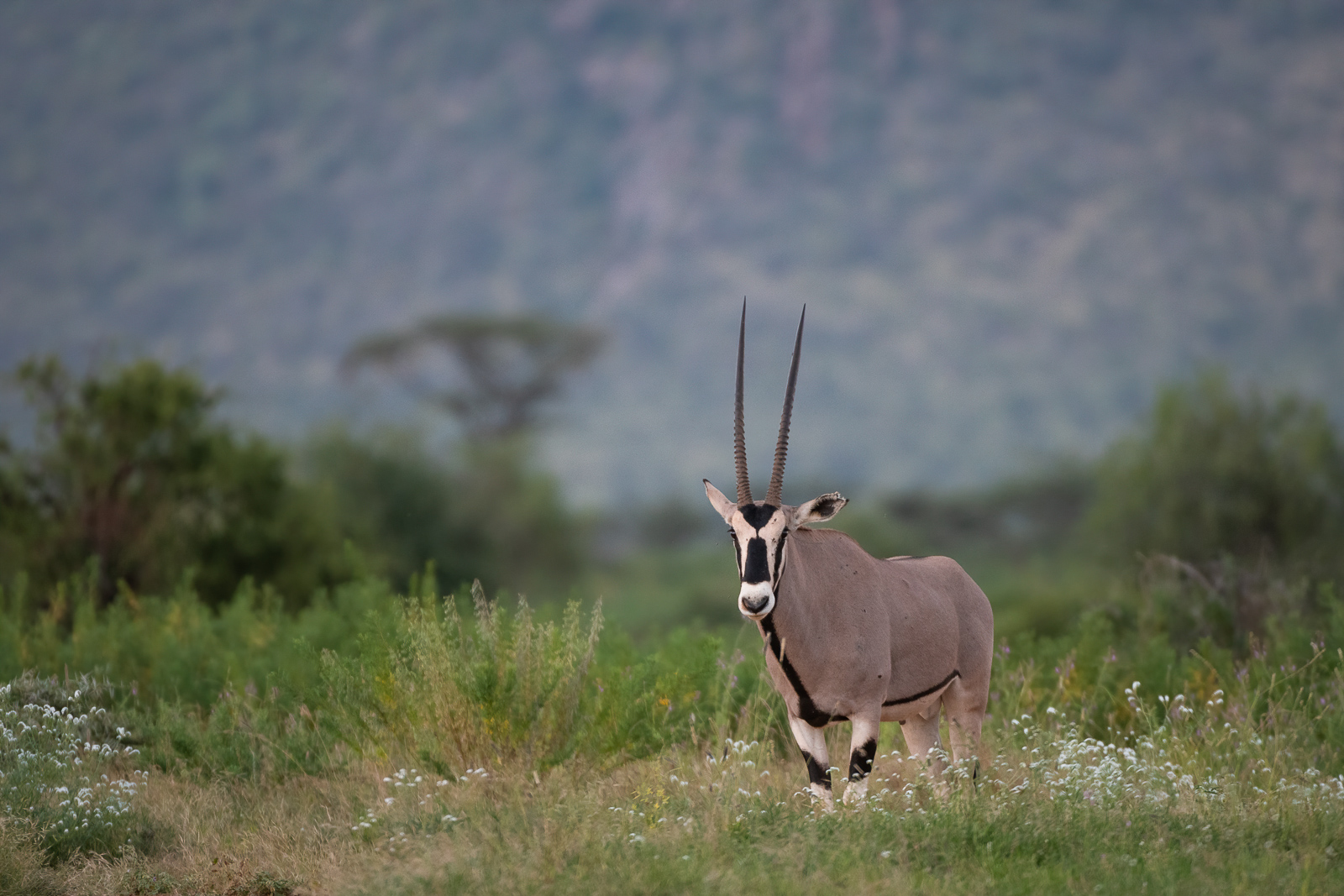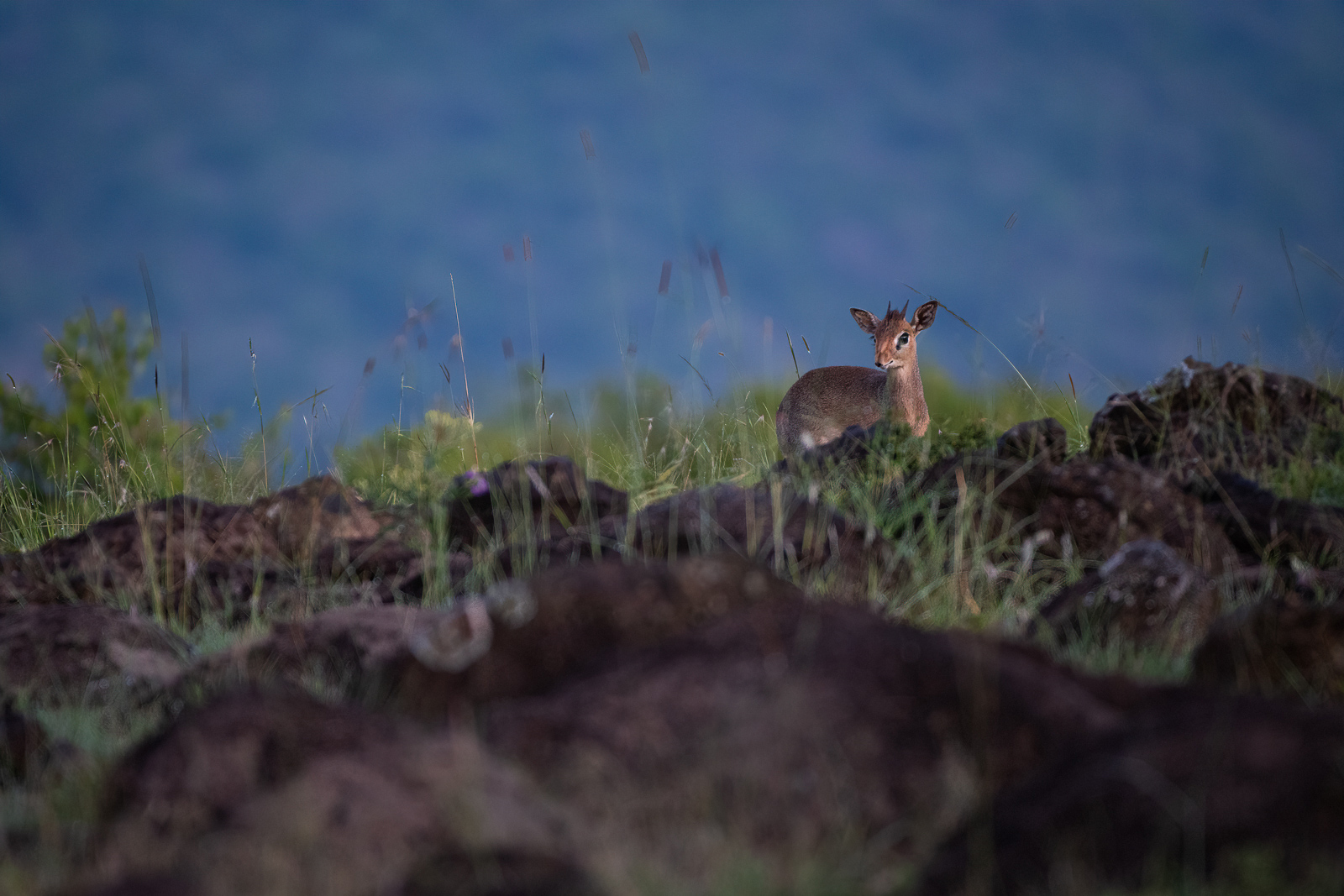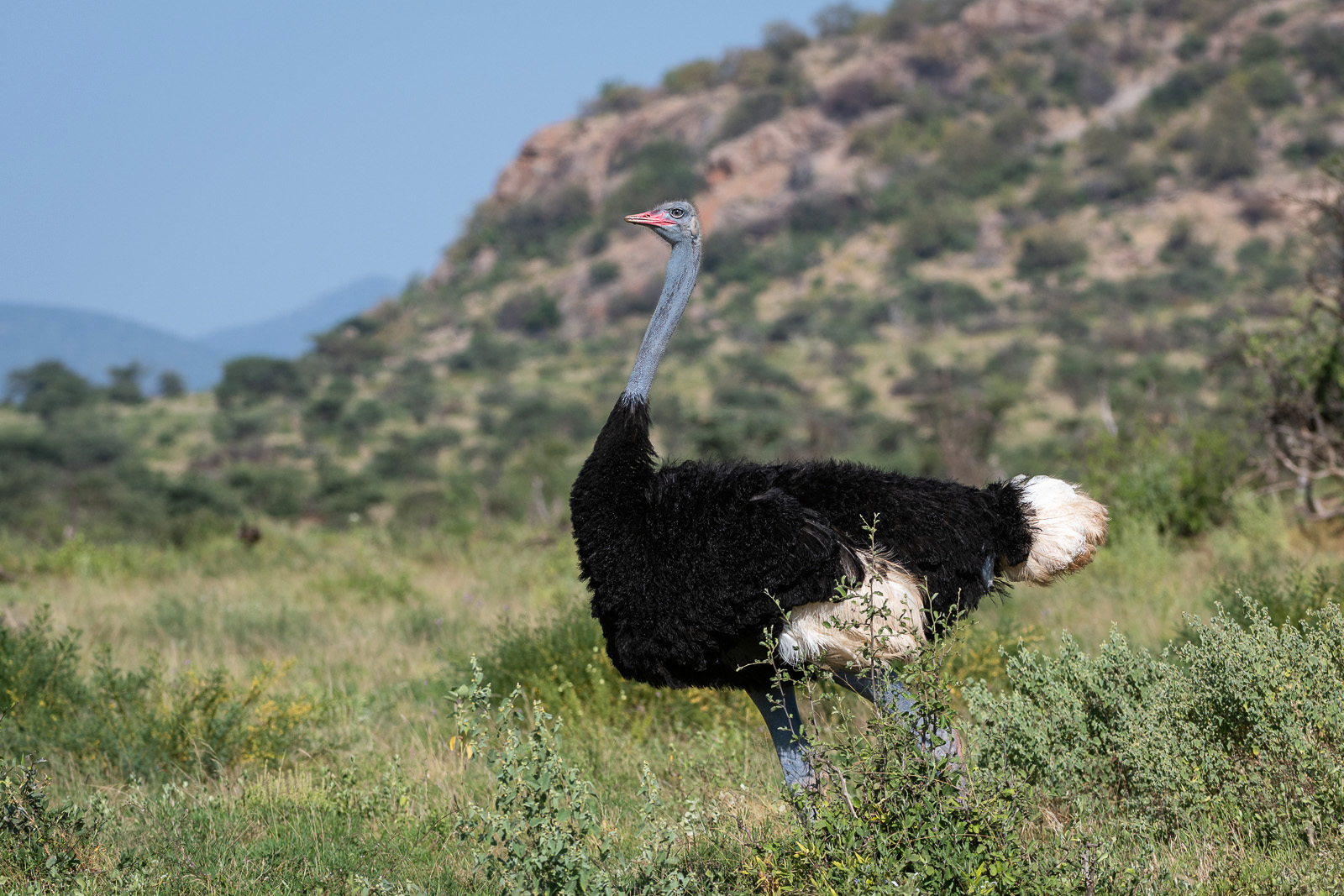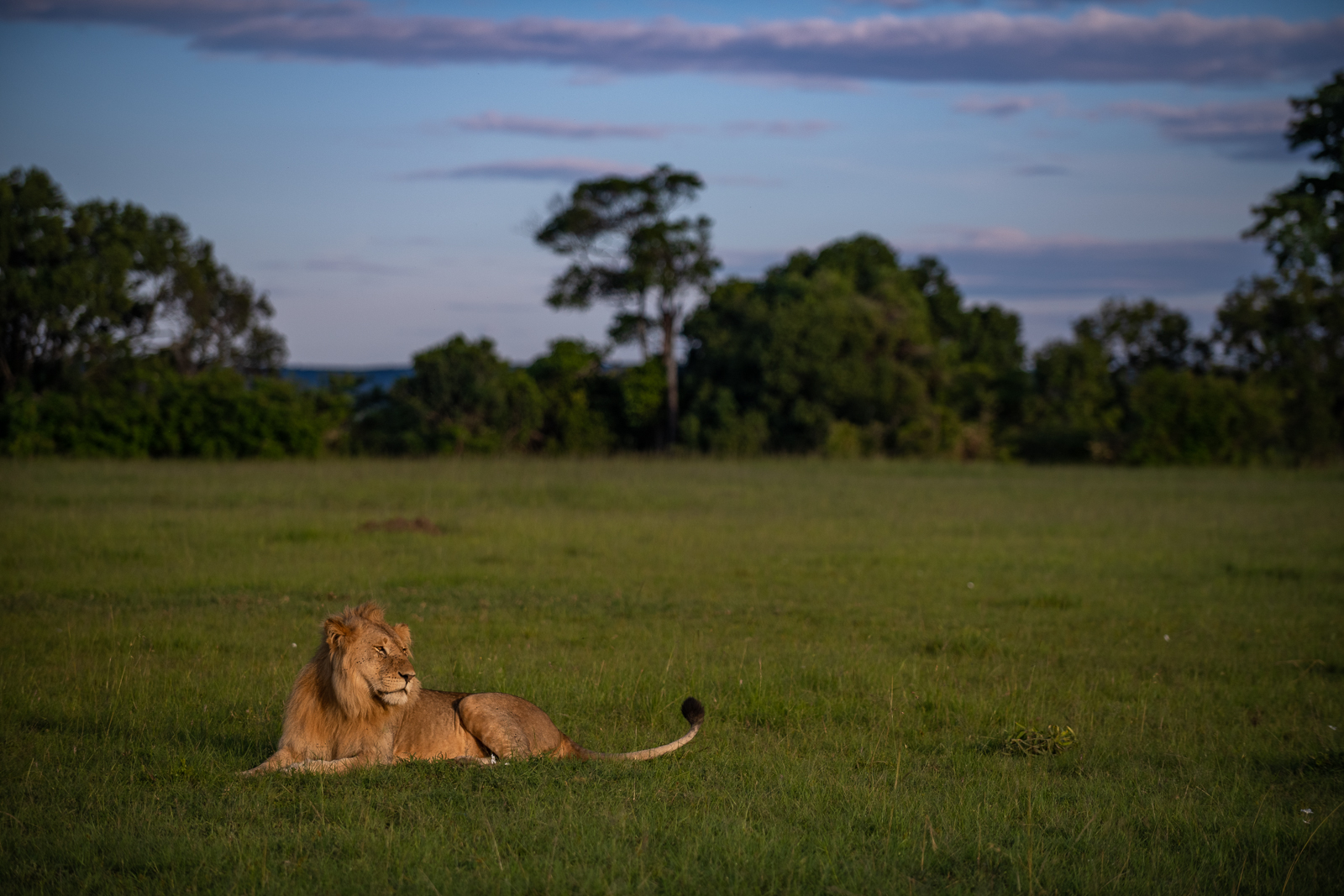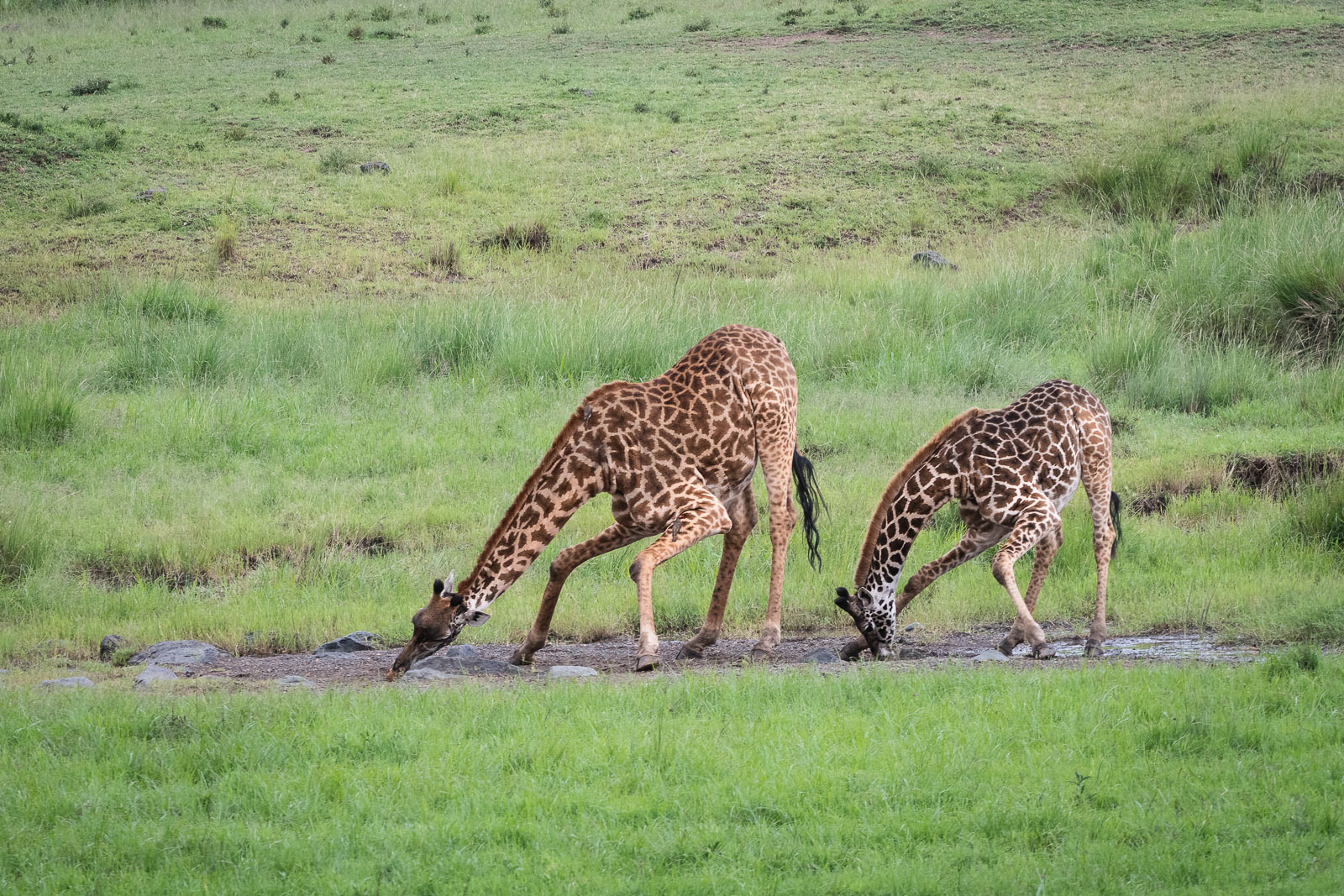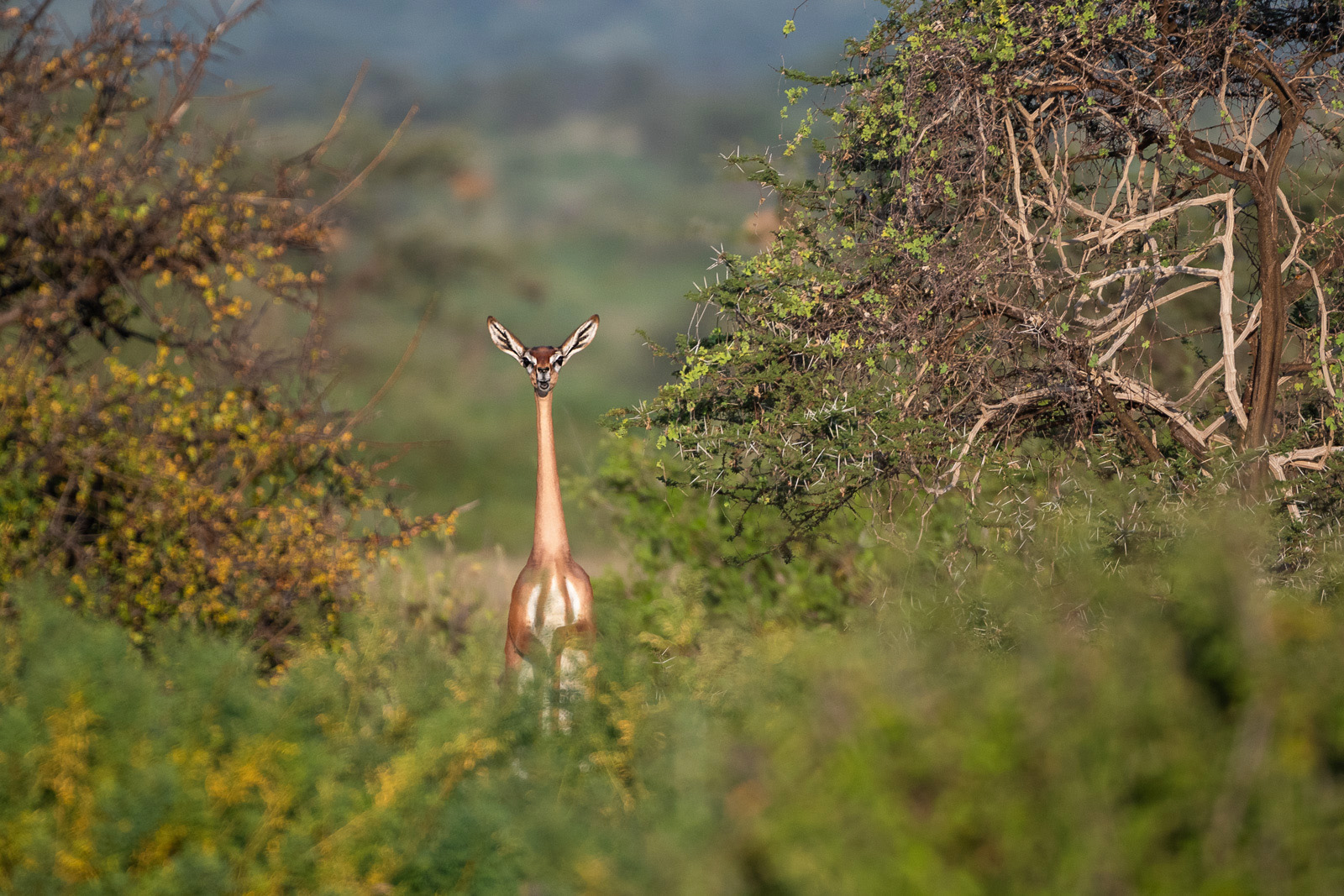Zebra Teeth
This zebra could clearly use some dental floss for those teeth. Zebras are one of the most common animals you see on an East African safari, but they’re still one of my favorites to photograph and they always provide new looks. We saw two species on this recent trip — the Grevys zebra, which is much more rare, and the plains zebra, which seem to be all over the place. Nikon D500 with Nikkor 200-400mm lens (at 350mm) ISO 400, f/8 at 1/800th of a second.
Red-Collared Widowbird
It’s fun to watch the mating ritual of widowbirds. The males will bounce up and down, suddenly popping up from the tall grass before falling back down. They are displaying the length of their tails for the ladies. The longer the tail, the better the chances of success. We saw Jackson’s widowbirds and also the red-collared, both in the Maasai Mara of Kenya. Nikon D500 with Nikkor 200-400mm lens (at 400mm) ISO 400, f/8 at 1/400th of a second.
East African Oryx
On the other end of the size spectrum from the dik-dik I posted yesterday is the East African oryx. This is one of the larger antelope species to be found in Kenya (the eland is the largest). Also known as the beisa, the oryx is often said to be the inspiration for the unicorn. Photographed in Samburu National Reserve. Nikon D500 with Nikkor 200-400mm lens (at 400mm) ISO 800, f/4 at 1/200th of a second.
Kirk’s Dik-dik
I photographed two different species of dik-dik on this recent trip. The Gunther’s dik-dik and the Kirk’s dik-dik. This is the latter. I saw lots of these guys, usually first thing in the morning and then again later in the day. Dik-diks are the smallest of the African antelopes. It’s hard to illustrate just how small they are without any reference, but to me, they look not much bigger than a jackrabbit. I mean, really small. I captured a lot of frame-filling shots of them, but preferred this composition with the foreground rocks. Photographed in the Maasai Mara of Kenya. Nikon D500 with Nikkor 200-400mm lens (at 400mm) ISO 1600, f/4 at 1/160th of a second.
Somali Ostrich
The Somali ostrich, also known as the blue-necked ostrich, was another new species for me. It was previously thought to be a subspecies of the common ostrich but was given its own distinct species designation in 2014. The males, like this one, have the blue neck and legs, which become even more blue during mating season. Photographed in Samburu National Reserve, Kenya. Nikon D500 with Nikkor 200-400mm lens (at 200mm) ISO 200, f/5.6 at 1/1600th of a second.
Maasai Giraffes
I photographed this one from the back porch of my tent in the Maasai Mara. The camp (Tangulia Mara) is set in a beautiful location up on a hill overlooking a natural salt lick. It really does have a Garden of Eden feel to it. Throughout the day, every kind of animal imaginable stops by to eat and get nutrients from the salt. At one point I counted fourteen giraffes. There were also elephants, baboons, waterbucks, buffalos, hippos, impala, zebras and more. This is a very awkward (and vulnerable) position for a giraffe. In fact, giraffes only drink water once every few days and spend the vast majority of their time standing up, including when they sleep and give birth. That said, they are very cautious about the whole process of splaying out their legs and getting low. These two giraffes seemed to be taking turns. One would go to the ground while the other stood guard. For a brief moment, however, they both got down for a mouthful of salt. Nikon D500 with Nikkor 200-400mm lens (at 400mm) ISO 800, f/8 at 1/640th of a second.
Standing Gerenuk
Gerenuk’s are known for their long necks — in fact, they are commonly called giraffe-necked antelope. At times, they will rear back on their hind legs and stand upright while feeding on higher leaves. This female gerenuk was doing just that before turning to look in our direction. Photographed in Samburu National Reserve in Kenya. Nikon D500 with Nikkor 200-400mm lens (at 400mm) ISO 400, f/4 at 1/1600th of a second.


